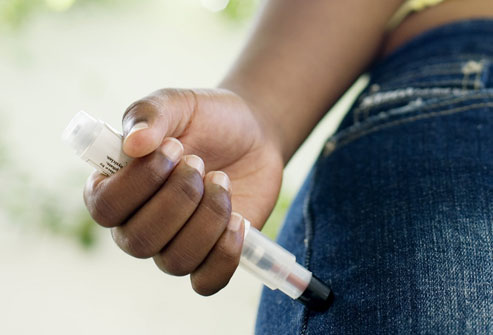A dental emergency should be dealt with through predefined steps, just like any other medical emergency, where there’s any sudden, unexpected deviation from a normally expected pattern of treatment.
Although infrequent, life threatening emergencies can and do occur in the practice of dentistry. This can be attributed to the following factors:
- Rise in the number of older patients seeking dental treatment
- Longer dental appointments
- Increase in the usage of drugs (medications) in dentistry
It has been estimated that excluding 10% of the dental emergencies that arise, the remaining life threatening conditions can be prevented.
Steps For Dealing With A Dental Emergency
In case of an emergency, the dental team (including the dentist, assistant, and a member of the office staff) has the responsibility of providing dental emergency treatment to safeguard the life and welfare of the patient until a physician is in attendance.
There are three critical steps involved in the management of dental emergencies, and these have been given below.
Dental Emergency Step #1: Examine The Medical History
Look through the detailed case history of the patient, including information about previous surgeries, current list of medications, prevailing medical conditions, allergies, and diet restrictions.
If there is any doubt regarding the patient’s medical status, consult the patient’s physician immediately to clarify the same.
Dental Emergency Step #2: Recognize The Problem
During the dental emergency, the underlying cause should first be identified for further treatment to be given. Here are some common emergency symptoms and details on how they should be dealt with.
Fainting (Syncope): Patients who faint or are about to faint are generally weak, and might have pale, cold, and sweaty skin, a lowered pulse rate, and low blood pressure.
Treatment: Make the patient recline (with the feet elevated), and place a damp cloth on the forehead. After this, pass an ammonia capsule under the patient’s nose.
Rapid Breathing (Hyperventilation): This condition presents through symptoms like breathlessness, rapid breathing, a numb feeling along the hands and feet, and palpitations.
Treatment: Encourage the patient to breathe slowly, and get the patient to re-breathe expired air with the help of a paper bag.
Heart Attack: This usually presents as chest pain that radiates to the arms, jaw, and back. It is also accompanied by secondary symptoms like sweating, breathlessness, anxiety.
Treatment: Stop the dental procedure immediately, contact an ambulance, administer oxygen to the patient, and place medications like aspirin and glyceryl trinitrate below the tongue.
Fits (Epilepsy): Epilepsy is characterized by a sudden loss of consciousness and an inability to breathe. Uncontrolled and involuntary movement of the hands and legs is another sign of epilepsy.
Treatment: The patient should be placed along his/her side, protected from injury by removing any sharp or heavy objects that are nearby, and given medical assistance. Most patients might be disoriented and sleepy after the attack, so scheduling the dental treatment for another day is the best option.
Low Sugar Levels In Blood (Hypoglycemia): Hypoglycemia presents through symptoms like headache, hunger, dizziness, sweating, weakness, and shivering. This should be suspected in a patient with known diabetes (high blood glucose levels), through the medical history.
Treatment: Orange juice, glucose drinks, or sugar lumps will immediately revive the patient. However, if the patient loses consciousness, glucose should be given as an injection.
Choking: When the patient is unable to breathe and presents a bluish discoloration in the skin, along with violent coughing spasms, you should treat the patient for symptoms of choking.
Treatment: The cause needs to be removed immediately, so applying pressure on the back with the patient leaning forward should help. If the patient is unable to remove, administer oxygen and arrange transfer him/her to the nearest hospital.
Severe Allergic Reaction (Anaphylaxis): Anaphylaxis is characterized by sneezing, breathlessness, itching, swelling, low blood pressure, higher heart rate, and cardiac arrest. This usually occurs right after the medication is administered.
Treatment: Adrenalin should be immediately administered in such cases as an injection into the muscle. Depending on the severity of the allergic reaction, you might have to repeat the dose after 5 minutes. Also, administering oxygen would be beneficial.

Dental Emergency Step #3: Revive The Patient
All dentists should be competent in basic life support resuscitation, i.e. they should be able to assess the affected patient’s breathing and blood circulation and carry out Cardio Pulmonary Resuscitation (CPR) if required.
All dental set-ups should be equipped with a mandatory drug kit that includes: an oxygen cylinder, glucose, adrenaline, glyceryl trinitrate tablets, aspirin, and steroids.
Also certain equipments such as blood pressure apparatus, stethoscope, first aid kit, and a fire extinguisher should be kept handy.
It is appropriate for a dentist to contact his nearest medical practitioner or facility in case of an emergency. Following the above steps will help in dealing with any dental emergency, before the problem gets out of hand.